Why the future of learning is in the middle
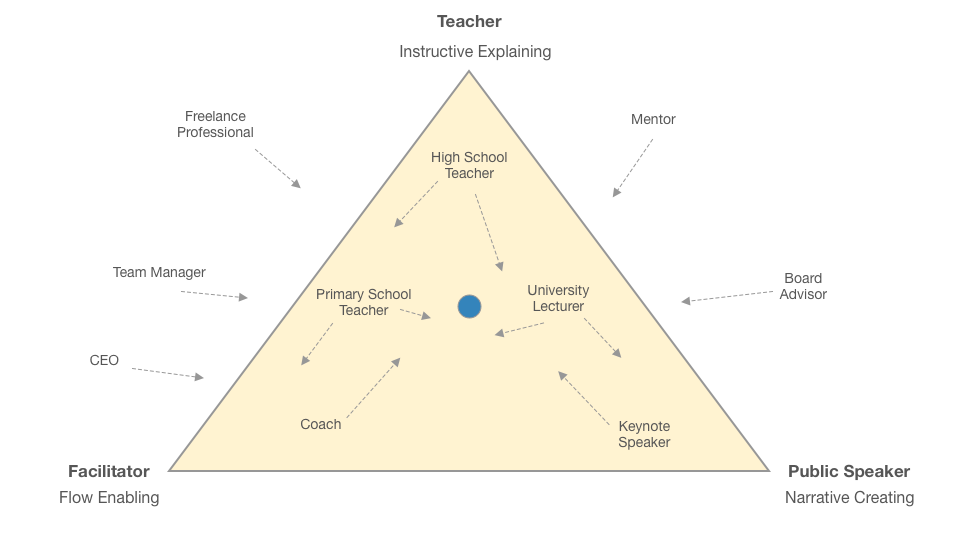
Become a workshop creator and magical things can happen
The view was spectacular and the light poured in.
In a top-floor conference room located in one of Manhattan’s most noteworthy skyscrapers, it was time to close the door, ignore the rest of the world, lean up against the window, and take a precious few moments of private time before cleaning up.
One of Roman Roy’s moments of misbehavior in HBO’s ‘Succession’? Fortunately not.
It was the end of a training day for two groups of senior executives at one of the world’s most well-known financial services companies, and my co-lead and I had just bid our last attendee farewell.
As well as navigating the groups through various technical concepts and exercises, we’d had to answer some challenging questions on a variety of topics: from privacy and ethics; to the best programming language for a specific type of data analysis. Taking a look at the feedback forms, we’d nailed it – both sessions were a big success.
My partner turned to me with a look of exhausted satisfaction at a job well done, and with questions on her mind. You wouldn’t have realised, but she was fairly new to this kind of work.
“Today went really well, but it’s a lot! I’ve done a good amount of public speaking before, but this…this is…different. And it’s not really just teaching – one of the guys at the office comes from a teaching background, and he said the same. It’s kinda hard to describe”
Yup. It kinda is.
It’s hard to describe, hard to define, hard to label.
Is what we do here teaching?
Is it Training? Speaking? Presenting? Facilitating?
Or something else?
These labels and their various connotations show up a lot in my work, especially as education and learning undergo huge change and reimagining.
One way I’ve been thinking about the type of experiential learning work I do is through a simple triangle.
The 3 elements
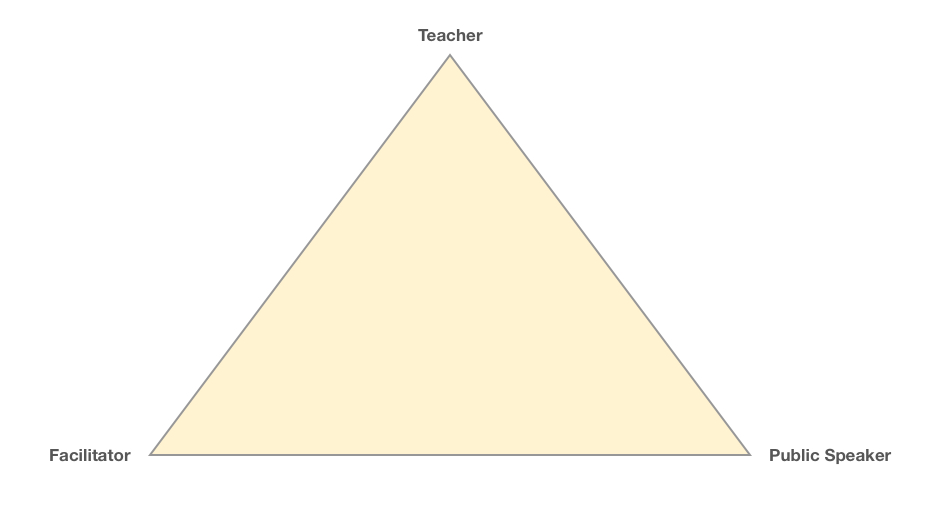
At one angle there’s Teaching.
Teachers need to know curriculum, concepts, connections, learning styles, and learners.
Teaching tends to be instructive, content-driven, and pretty rigorous, with a focus on attainment and absorption. Learning is the goal. But teachers don’t necessarily need to be experts (as Adam Grant has pointed out), nor do they have to have direct industry experience in the area they teach: a practitioner does not necessarily make a good teacher (and visa versa, of course).
Second, there’s facilitation.
A facilitator is there to guide a group towards particular goals, but facilitation is far less instructive than teaching, with less (or sometimes zero) content to communicate.
A facilitated environment is often highly collaborative, and needs plenty of room-reading skills, plus the ability to fluidity course correct, navigate, and mediate.
Because of its more open and free-flowing nature the facilitated space is very different every time, so as a facilitator you never really know what you’re going to get. This, of course, can be a blessing and a curse.
Third, there’s public speaking. Notwithstanding any Q&A sections, it’s usually one-way communication, and the content tends to change little from one gig to the next.
A high-quality public speaker possesses the ability to inspire, communicate, delight, and amaze, along with clearly demonstrating their expertise and credibility in the domain of which they are speaking.
However, they have little responsibility for the outcomes: their role is not to guide discussion as a facilitator would, or take on the teacher’s role of ensuring no one is left behind. The cynic may even think speakers are sometimes like a panda: just eats shoots and leaves (and then sends an invoice). The best speakers, though, are able to go beyond and deliver something more than just a pre-set talk – as we’ll see below.
So with a brief descriptor added for each, here’s how our triangle shapes up:
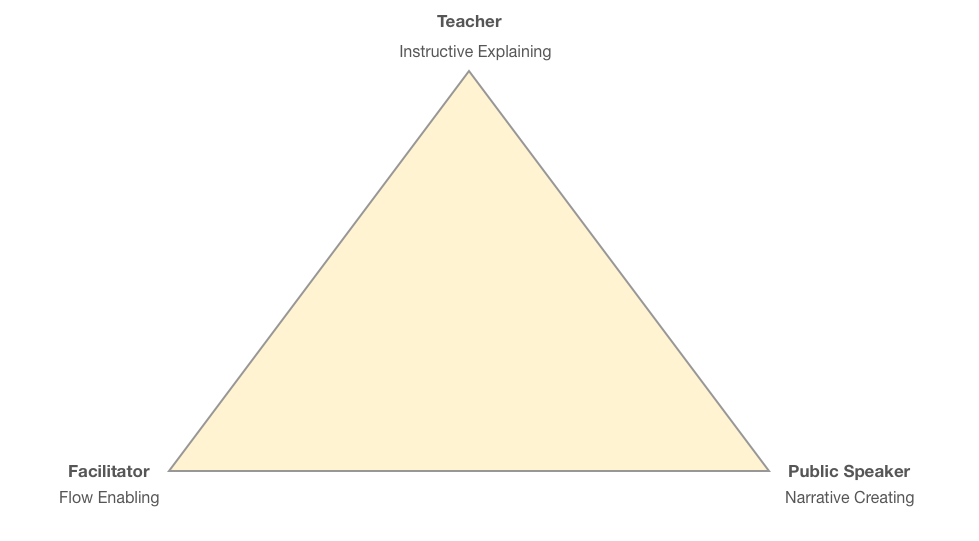
Moving to the middle
For those seeking to help people and organizations get where they want to go, I believe the sweet spot is right in the middle of this triangle.
As in the past, success can still be found by focusing on just one or two of the angles of the triangle, but the changing world we live in demands more: increased mobility and adaptability; the ability to connect dots; to hold attention; and to explain topics and concepts simply and crisply.
To get here means moving to the middle.
Without it, we encounter the public speaker who can’t read a room and anticipate an audience’s needs. The facilitator unable to deconstruct and translate a challenging brief into something clear and actionable. The teacher who lacks the ability to spark their students’ imaginations and aspirations.
Moving to the middle you can teach, instruct, and explain complex concepts.
You’re able to engage and inspire with compelling stories, along with thought-provoking and actionable real-world experience.
You empower participants, ask open questions, and believe in their ability to discover interesting answers to tricky problems.
You go beyond the textbook and design obstacle courses to encourage curiosity, learning, and resilience.
Not every role necessarily needs to move to the middle, but almost everyone can benefit from spending some time there.
And it’s possible to get there in a few ways – either by dipping into the middle for inspiration, or shifting from one angle of the triangle to another: from instructive to narrative; open format to outcome-focused; or going from selecting stories to suggesting spaces to explore.
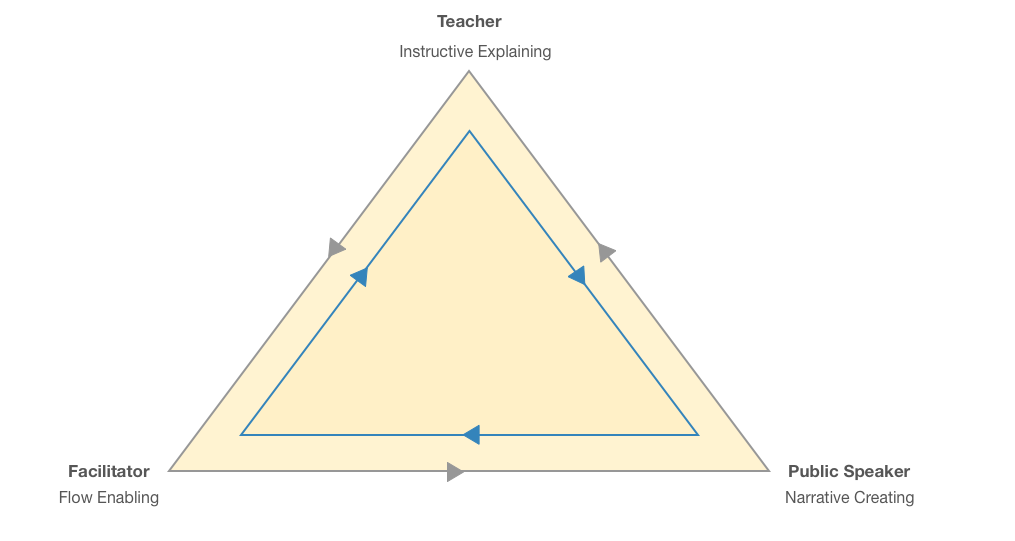
Here are a few ideas of where a few roles could start to shift and evolve as they spend some in the middle:
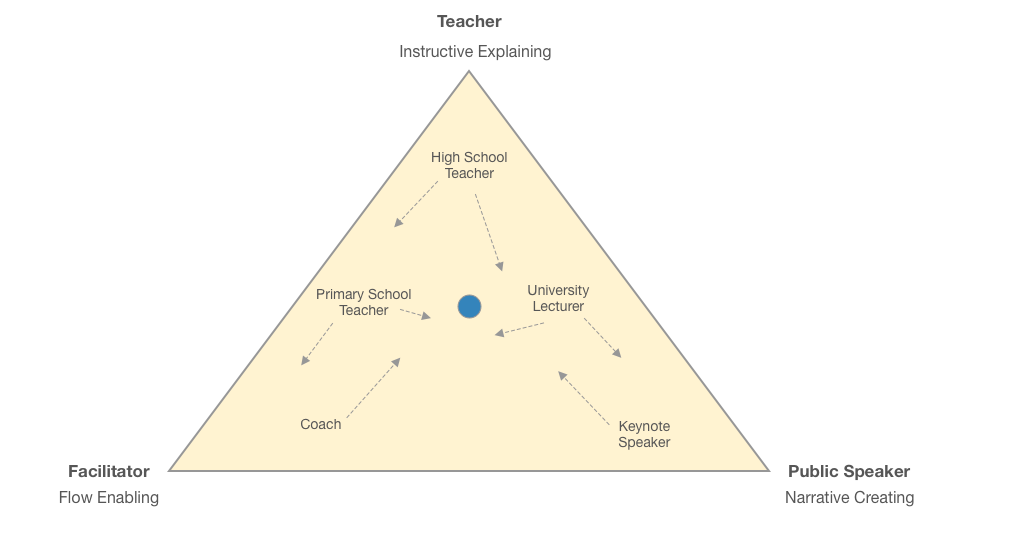
And it’s not just roles that have facilitation, keynote speaking, or teaching at their core – more and more people will benefit from going to the middle:
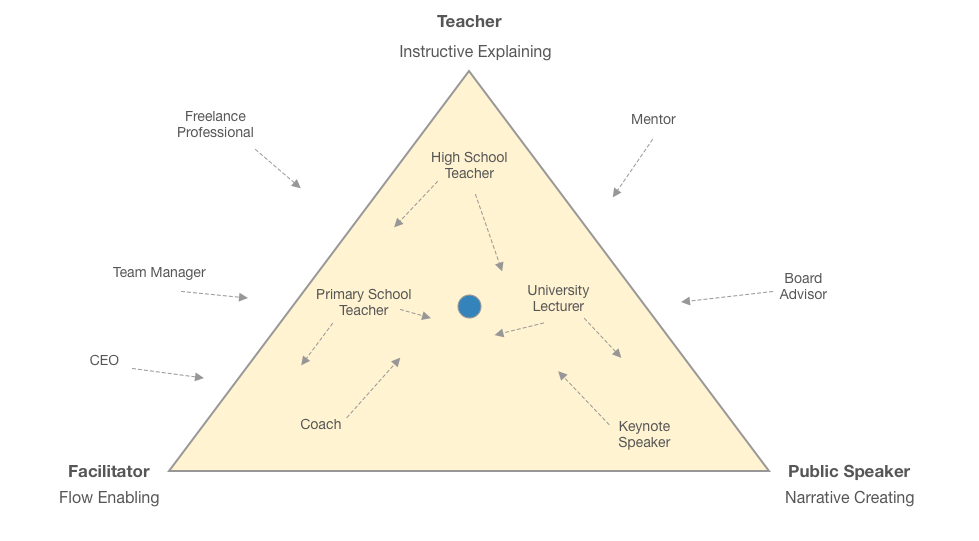
From labels to workshops
Going back to labels, what do we call this place?
This middle has many names, yet it also has none.
Perhaps it doesn’t need one at all: some of the best teachers, trainers, coaches, and facilitators already work in this way, so why throw in more labels that may create barriers and confusion?
However, something that gets to the crux of what the middle represents are workshops.
There are a few flavours of workshop, each with different features – yet no matter the flavour, they all share a few common traits.
Workshops aren’t about sitting still obediently, listening to an expert who’s put up on a pedestal. They’re not one-way, and they’re not hierarchical.
Workshops are about doing the work, getting hands-on, being inspired.
They’re about connecting with others, experimenting, and testing out something new.
They’re about getting stuck, making breakthroughs, seeing another way of doing things, and another way to think.
Workshops may just be the future of learning.
Hybrid talent, hybrid learning
The people best positioned to imagine, produce, and deliver the future of learning are those in the middle – the hybrids.
They’re hard to label and difficult to pin down, but the best of them are becoming valuable assets in many contexts and industries. Some are even becoming Educators in Residence.
Right now they’re underrated, rare, and valuable, and their skills are scarce.
To become a part of this future, many more of us will need to build these hybrid skills.
We’ll build them through practicing visual design, undertaking coaching programs, applying the lens of the Feynman technique, understanding nonviolent communication, exploring behavioral psychology, fostering intersectional ideas, and much more.
And we’ll utilize the people already in the middle to help us do this.
The best news of all is that leveling up has become easier, more effective and more enjoyable than ever before. Technology enables us to create globally-connected cohorts, to share ideas in an instant, and to inject content and concepts with our own unique signature style.
Tomorrow’s most impactful growth, transformation, and breakthroughs will come from applying the principles of workshops, aided by technology, in environments carefully designed and curated by the humans with hybrid skills.
This approach will work for individuals, it’ll work for teams, and it’ll work for organizations.
In fact, it’s already doing so. As I’ve seen in my work designing workshops for emerging entrepreneurs, senior executives, and future leaders, these are places where magical things can happen.
To get there, we just need to start moving to the middle.
Want to learn more? Try out my free workshop design course, or get in touch to talk about what’s possible for you in the middle.
thanks to Tom Critchlow and Murray Gray for their feedback on drafts of this article.